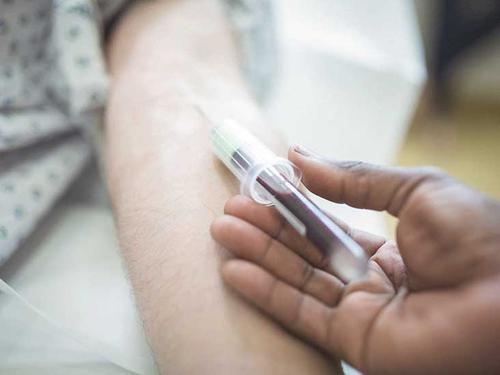How Much Blood Does an Average Human Body Have?
Did you know that blood forms as much as 7% of the body weight of an average human being? Suspended in plasma, blood performs a number of essential internal functions that keep us going. Without blood, your body wouldn't be able to regulate temperature or send adequate oxygen to your tissues in order to keep you functioning normally. Blood also removes wastes (such as urea, lactic acid, and carbon dioxide) as well as actively controls the immunological functions of your body.
Does Everyone Have the Same Amount of Blood?
If you've ever wondered how much blood the human body requires for proper functioning or whether everyone has the same amount of blood, we're here to answer those questions and satisfy your curiosity.
An average adult's blood density is about 1060 kg/m3, possibly closest to that of pure water (1000 kg/m3). But the normal blood percentage in a human body varies according to a number of factors such as age, gender, or location. Let's see how these factors influence the amount of blood in your body for day-to-day functions.
1. Age
Babies who are born full term will have about 75 ml of blood per kg of their body weight, so an average baby of 8 pounds or 3.6 kg will have about 270 ml of blood. An average 80-pound child will have 2650 mL of blood, whereas a healthy adult weighing 150-180 pounds will have about 4,500 mL to 5,000 mL of blood.
Basically, the amount of blood varies by weight as well as the complex functions your body performs as it gradually heads toward maturity.
2. Gender
Testosterone stimulates the production of hemoglobin, and since men have more testosterone than women, they tend to have a higher blood volume. Moreover, women periodically lose blood through menstruation during their reproductive years which leads to lower overall blood quantity in women.
However, during pregnancy, women have 30% to 50% more blood than women who're not pregnant. The extra blood is necessary to support their growing fetus.
3. Location
The overall quantity of blood in your body can also vary according to location, or more specifically, altitude.
Air is much thinner at higher altitudes, and due to the body's natural proclivity to change along with changing external conditions, your body can produce more red blood cells at higher altitudes. This is to make sure there is enough oxygen reaching the tissues of your brain which is necessary for you to function normally.
Testing Your Blood Levels
Your doctor may order a blood volume test for a number of reasons including testing for symptoms of anemia and to gain understanding about how your body is responding to certain treatments.
- Hemoglobin and Hematocrit Tests
Hemoglobin and hematocrit tests are often conducted to check for anemia and are usually bundled with a complete blood count (CBC).
- Blood Volume Test
A blood volume test or plasma test is used to measure the volume of blood in your body, and more specifically, the volume of plasma and red blood cells.
How Much Blood Can Your Body Lose?
Have you ever wondered how much blood in the human body is dispensable? Technically speaking, blood loss of any amount is called a hemorrhage. Hemorrhages can be both internal and external, but an external hemorrhage is more easily treated than an internal one.
Blood loss or hemorrhage is divided into categories based on severity and how easily the damage causing the blood loss can be controlled.
1. Class I Hemorrhage
When your body loses up to 15% of its total blood volume, it's classified as a Class I hemorrhage which is typically a non-threatening hemorrhage (that is, blood loss that doesn't call for additional resuscitation or hydration).
2. Class II Hemorrhage
This is when blood loss is 15%-30% of the total volume and leads to tachycardia which is when the resting heart rate goes above normal values in order to compensate with peripheral vasoconstriction. The heart goes into tachycardia because the body prioritizes where it needs to send the blood - mainly to the heart and brain in order to keep functioning normally.
3. Class III Hemorrhage
A Class III hemorrhage is triggered when your body loses 30%-40% of the total blood volume, leading to a rapid drop in blood pressure along with an increased heart rate. Resuscitation is highly recommended in such a state.
4. Class IV Hemorrhage
Blood loss greater than 40% of the total volume is termed a Class IV hemorrhage and calls for aggressive resuscitation attempts to prevent death.

Final Thoughts
Blood is involved in most of the major functions of our body. Moreover, the volume and health of its components (red blood cells, white blood cells, and platelets) are important indicators of your overall health.
We strongly recommend that you incorporate holistic blood tests as part of your routine checkups to nip potential threats to your health in the bud.
YOU MAY LIKE
-
How to Stop Heart Palpitation
-
Top Symptoms and Tips for High Blood Pressure
-
Best Remedies to Reduce Cholesterol Naturally
-
Easily Available Foods That Reduce High Blood Pressure
-
How Much Cholesterol Per Day - Best Tips for You
-
Can Blood Pressure Indicate a Heart Attack?
-
If Your ESR Level Is Very High Then What Will Happen - Best Tips for You
-
3 Kinds of Foods to Avoid With Diabetes
-
High Blood Sugar Can Make You Feel Bad and This Is Why?
-
Ways to Battle the Effects of High Blood Pressure
